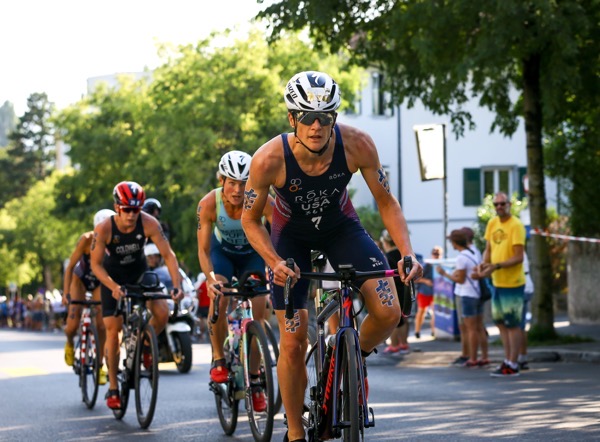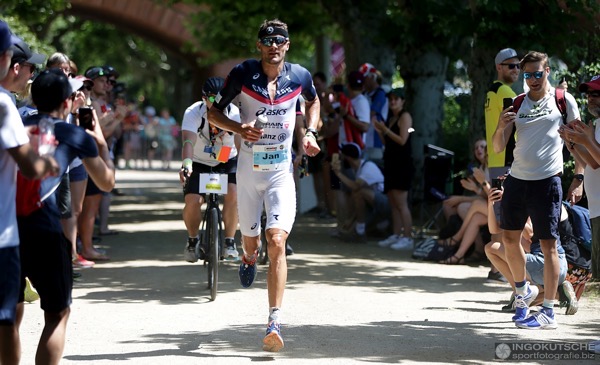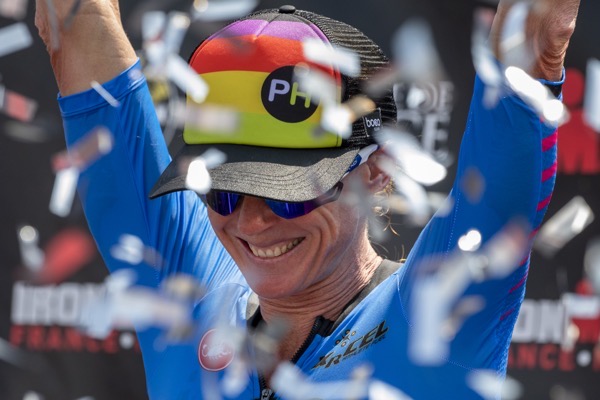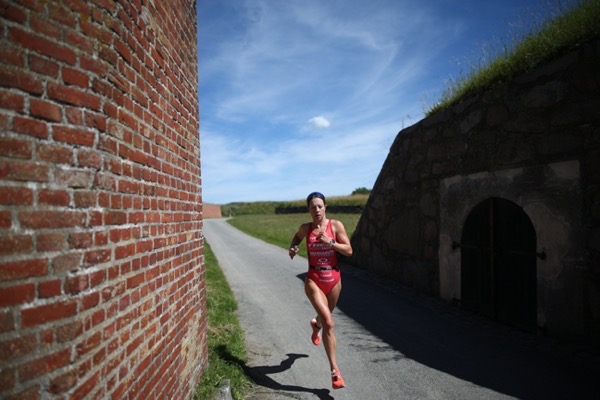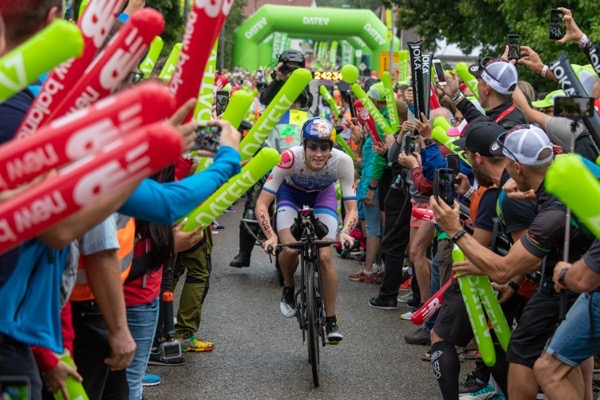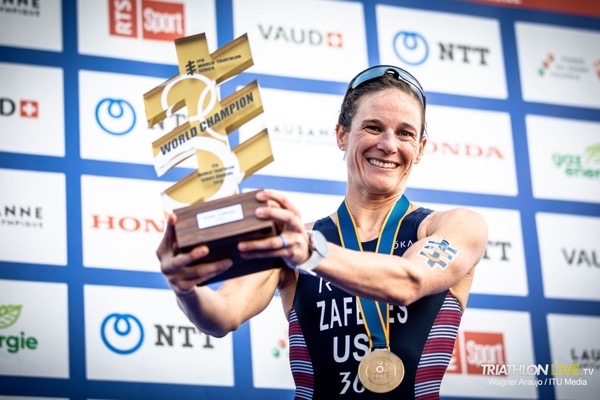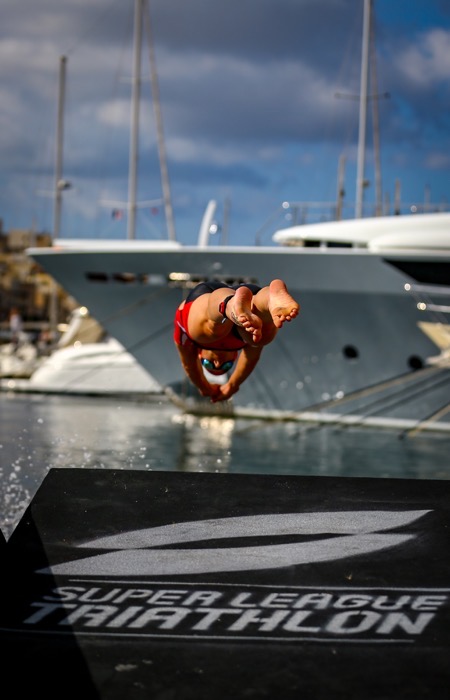Now that Kona Pro Qualifying has come to a close for 2019, it’s time to evaluate how the new qualifying system has worked for its first full season. This post compares the old to the new system and looks at some of the implications, giving data and evaluations on a couple of different aspects. I close with a few ideas on how to improve the current system.
Comparing the Outcomes
In order to compare the old points-based “Kona Pro Ranking” to the new slot-based system, I have applied the KPR system to the results of the 2019 racing season and looked at the resulting Kona fields. This section looks at the major differences that these two systems would have produced.
Simulating the 2019 KPR
There are a couple of details that make the comparison a bit tricky. Converting the new system to the old system is relatively straight-forward for Ironman races – the three categories of the KPR (Kona as P-8000, Regionals as P-4000, and regular IMs as P-2000) can be easily identified in the 2019 season. However, the distinction in the new system between races with just the regular two slots and the races with extra unassigned slots gets lost, but of course might have played a role in athletes deciding which race to tackle. Another small problem: For 70.3s, there have been four categories in the old KPR (Worlds as P-3000, Regionals as P-1500, and regular 70.3s as P-750 or P-500). There is no distinction between P-750 and P-500 in the new system, so I have put all of them in the P-500 category. One might do something trickier to determine the equivalents of P-750s (maybe based on which race was a P-750 in the season before), but that is unlikely to make a big difference in the overall rankings.
The following tables show the top-ranked athletes based on this simulation.
Top of the Female KPR
| Rank |
Name |
Nation |
Points |
Races |
| AQ |
Ryf, Daniela |
SUI |
17000 |
3+1 (2000/3000) |
| AQ |
Charles-Barclay, Lucy |
GBR |
14400 |
2+2 (4000/500) |
| AQ |
Crowley, Sarah |
AUS |
13400 |
3+1 (3400/1275) |
| 1 |
Haug, Anne |
GER |
11310 |
2+2 (2000/400) |
| 2 |
True, Sarah |
USA |
8735 |
2+2 (1600/135) |
| AQ |
Carfrae, Mirinda |
AUS |
7920 |
2+2 (1670/500) |
| 3 |
Piampiano, Sarah |
USA |
7715 |
3+1 (2000/625) |
| 4 |
Sali, Kaisa |
FIN |
7460 |
2+1 |
| 5 |
Naeth, Angela |
CAN |
6705 |
3+1 (960/320) |
| AQ |
Moench, Skye |
USA |
6380 |
2+2 (960/500) |
Daniela’s total of 17.000 is quite unbelievable and will be very hard to beat. Her total is based on her win in Kona (8.000 points), a win at the North American Regionals in Texas (4.000 points), her win at the 70.3 Champs (3.000 points) and a win at IM Austria (a “paltry” 2.000 points). Wow!
Top of the Male KPR
| Rank |
Name |
Nation |
Points |
Races |
| AQ |
Currie, Braden |
NZL |
11965 |
3+1 (1280/1435) |
| AQ |
Weiss, Michael |
AUT |
11280 |
3+1 (2890/1290) |
| AQ |
Lange, Patrick |
GER |
10415 |
2+2 (515/400) |
| 1 |
Aernouts, Bart |
BEL |
9830 |
2+2 (855/500) |
| 2 |
Russell, Matthew |
USA |
8715 |
3+1 (1670/320) |
| 3 |
O’Donnell, Timothy |
USA |
8015 |
2+2 (1280/400) |
| 4 |
Hanson, Matt |
USA |
7890 |
3+1 (2000/400) |
| AQ |
Frodeno, Jan |
GER |
7500 |
1+2 (4000/500) |
| 5 |
McNamee, David |
GBR |
7395 |
2+1 |
| 6 |
Van Berkel, Tim |
AUS |
7315 |
2+2 (2240/400) |
Athletes Qualifying Only Under the Slot System
Here’s a table that shows the women who snagged a 2019 slot but would have been outside the Top 35 ranks in the KPR and therefore wouldn’t have qualified for Kona:
| Rank |
Name |
Nation |
Points |
Races |
| 39 |
Philipp, Laura |
GER |
3000 |
1+2 (2000/500) |
| 40 |
Derron, Nina |
SUI |
2940 |
2+2 (540/400) |
| 42 |
Thoes, Svenja |
GER |
2800 |
1+2 (2000/400) |
| 43 |
Kessler, Meredith |
USA |
2760 |
3+1 (540/400) |
| 50 |
Spieldenner, Jennifer |
USA |
2560 |
1+2 (2000/240) |
| 65 |
Riveros, Barbara |
CHI |
2100 |
1+1 |
| 67 |
Huse, Sue |
CAN |
2045 |
1+1 |
| 66 |
Bleymehl, Daniela |
GER |
2000 |
1+0 |
| 71 |
Bilham, Emma |
SUI |
2000 |
1+0 |
| 90 |
Mack, Danielle |
USA |
1355 |
1+1 |
| 113 |
Kunz, Martina |
SUI |
990 |
1+2 (720/135) |
As usual, the “rank” column only looks at athletes who are “competing” for points-slots, i.e. without automatic qualifiers or those who didn’t race any full-distance Ironman races. Here’s the corresponding table for men outside the Top 50:
| Rank |
Name |
Nation |
Points |
Races |
| 55 |
Buckingham, Kyle |
ZAF |
2250 |
2+1 |
| 56 |
Peterson, Kennett |
USA |
2240 |
1+2 (1600/320) |
| 57 |
Kraemer, Lukas |
GER |
2225 |
1+1 |
| 59 |
Tollakson, TJ |
USA |
2180 |
1+2 (1280/400) |
| 60 |
Clarke, Will |
GBR |
2155 |
2+1 |
| 61 |
Viennot, Cyril |
FRA |
2155 |
2+2 (235/240) |
| 62 |
Duelsen, Marc |
GER |
2065 |
2+1 |
| 65 |
Fontana, Daniel |
ITA |
2000 |
1+0 |
| 65 |
Hogenhaug, Kristian |
DEN |
2000 |
1+0 |
| 84 |
Schumacher, Stefan |
GER |
1670 |
1+0 |
| 89 |
Alonso McKernan, Clemente |
ESP |
1600 |
1+0 |
| 115 |
Silvestrin, Frank |
BRA |
1280 |
1+0 |
As expected, athletes who wouldn’t have qualified in a points system are those with “one big result” (winning an IM, e.g. Sue Huse who won IM Taiwan, Jen Spieldenner who won Louisville, or Kristian Hogenhaug who won IM Hamburg) or those who received a slot that rolled down quite far (e.g Martina Kunz, 5th in Hamburg, or Stefan Schuhmacher, 6th in Mar del Plata). This does not imply that these athletes don’t deserve to be in Kona – after all the system is what it is, and they probably would have raced more under a different qualifying system.
Athletes Qualifying Only Under the KPR System
Of course, there are also athletes who won’t be able to race in Kona 2019 but would have had the chance if the KPR system had still been in place. The following tables do not include athletes who didn’t qualify after declining their slots (such as Teresa Adam or Heather Wurtele):
| Rank |
Name |
Nation |
Points |
Races |
| 5 |
Naeth, Angela |
CAN |
6705 |
3+1 (960/320) |
| 14 |
Oliveira, Pamella |
BRA |
5285 |
1+2 (1600/1500) |
| 27 |
Duke, Dimity-Lee |
AUS |
3975 |
2+2 (1280/400) |
| 28 |
Watkinson, Amelia |
NZL |
3875 |
1+2 (2455/500) |
| 30 |
Hansen, Jennie |
USA |
3685 |
3+1 (720/30) |
| 31 |
Lundstroem, Asa |
SWE |
3615 |
3+1 (565/240) |
The same table for the male Pros:
| Rank |
Name |
Nation |
Points |
Races |
| 17 |
Burton, Matt |
AUS |
5015 |
3+1 (960/320) |
| 25 |
Wild, Ruedi |
SUI |
3890 |
2+2 (1600/170) |
| 28 |
Chevrot, Denis |
FRA |
3605 |
2+2 (720/500) |
| 29 |
Long, Sam |
USA |
3620 |
3+1 (340/400) |
| 32 |
Harvey, Jarrod |
AUS |
3270 |
2+0 |
| 36 |
Rodriguez Iglesias, Gustavo |
ESP |
2915 |
3+1 (540/135) |
| 37 |
Blanchart Tinto, Miquel |
ESP |
2780 |
3+0 (540/0) |
| 38 |
Wojt, Lukasz |
GER |
2740 |
2+2 (960/320) |
| 39 |
Kappler, Blake |
AUS |
2695 |
2+2 (405/100) |
| 46 |
Dirksmeier, Patrick |
GER |
2455 |
2+1 |
| 47 |
Kramer, Christian |
GER |
2425 |
3+1 (230/55) |
| 49 |
Van Looy, Diego |
BEL |
2400 |
3+0 (720/0) |
| 50 |
Huerzeler, Samuel |
SUI |
2390 |
3+0 (385/0) |
These athletes fall into two different categories:
- Lots of Kona or 70.3 Worlds points from late 2018
Pamella Oliveira was fourth at 70.3 Worlds in Port Elizabeth, then followed that up with three 70.3 wins (including the South American Regional Championships in Buenos Aires) and a second place at IM Brasil – unfortunately behind Sarah Piampiano who took the single female slot.
- Lots of good (but no great) results in 2019
The “poster child” for this category is Matt Burton: A 3rd at Western Australia, a 4th at IM New Zealand and a 4th at IM Cairns were just outside the Kona slots – either by one or two spots. A last-minute effort at IM Sweden ended in a frustrating DNF and no Kona slot.
Athletes Impacted by the New System
Some athletes love to race a lot, regardless of “strategic choices” to qualify. For example, Matt Russell has done four long-distance races between April and July, and even though he secured a slot at IM Frankfurt, he followed that up with Challenge Roth (one week after Frankfurt) and a win at IM Lake Placid (just four weeks after Frankfurt).
But there were also athletes who had to adapt their race selection or race strategies in order to qualify. A few examples:
- Sarah True probably raced a bit harder in Cairns and Frankfurt knowing she needed a first or second to qualify, compared to a “solid finish” which would have secured her slot in a points system.
- Angela Naeth would have been safe for a Kona slot after her sixth place in Kona and a second place in Cozumel in November under the old KPR system. Instead, she was chasing a slot even while struggling with injuries, resulting in four unsuccessful attempts over the summer (three DNFs in Boulder, Canada and Tallinn, and a fourth place at IM Copenhagen).
- Braden Currie missed his Kona slot by one spot at IM New Zealand and thus was forced to also race IM Cairns. As he was racing Challenge Roth, he probably would have preferred to skip Cairns. (He DNF’d in Roth.)
Data on 2019 Racing
Gender distribution of Pro Slots
When the new system was announced, the “unassigned slots” were one of the main aspects discussed and how that would impact the number of male and female Pros in Kona. Here’s a look at the resulting numbers:
| Season |
Total |
Male |
Female |
Female Quota |
| 2016 |
99 |
57 |
42 |
42,4% |
| 2017 |
92 |
54 |
38 |
41,3% |
| 2018 |
92 |
53 |
39 |
42,4% |
| 2019 |
101 |
56 |
44 |
43,6% |
(The total for 2019 is currently higher as it shows the number of qualified athletes. That number will likely be a bit smaller leading up to the race with athletes withdrawing, typically there are at least five athletes who don’t race even though having accepted a slot.)
These numbers show that there hasn’t been a major change in females Pros racing in Kona.
Why are the hopes of more even slots still unfulfilled? Ironman will probably point to the reduced number of females starts: In 2018 34,7% of the Pro starters were females, that number has been reduced to 31,4% in 2019. Also, it seems that the Regional Championships were quite attractive for the females in the past: In 2018 38,3% of the starting Pros at the Regionals were female. (My guess is that because more points were available, it was a chance for female Pros to qualify with just one result.) The share of females in the 2019 Regionals was 32,0%, almost exactly the overall average. Therefore, most of the unassigned slots went to the male Pros (16 out 20), but the share of unassigned slots that went to the men (80%) is significantly higher than their share of Pro athletes (68,6%).
DNF Rate
When the new system was announced, there was some speculation about athletes dropping out who were looking for a slot but found themselves too far back. Here’s just one example of many:
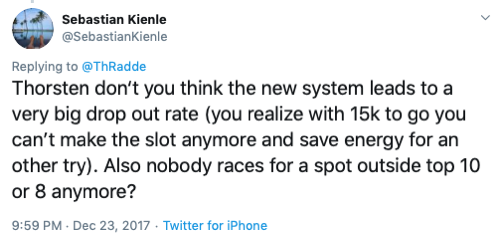
However, looking at the DNF rates for the last few seasons, the DNF rate has hardly moved at all:
| Season |
Male Pros |
Female Pros |
| 2017 |
26,1% |
16,1% |
| 2018 |
24,8% |
16,9% |
| 2019 |
26,3% |
16,5% |
It is safe to say that the impact of the qualifying system on the DNF quota has been negligible.
Quantity of Racing
The next table lists the average number of races that the Kona participants did in the season before Kona. In order to make the periods comparable, I’ve used the ten months after Kona to the end of August qualifying (e.g. for the 2018 season it’s races between October 15th, 2017 to August 19th, 2018).
| Season |
IMs |
70.3s |
Challenge |
| 2017 |
2,02 |
2,47 |
0,51 |
| 2018 |
2,16 |
2,37 |
0,64 |
| 2019 |
1,72 |
2,06 |
0,69 |
There has been a noticeable decline in the number of races a Kona athlete has done under the new system. (While it’s quite likely that the new system was the major contributor to this decline, it’s probably best to also check next season’s numbers before making a final call.) This is most pronounced for Ironman races – which seems quite logical since when an athlete has qualified after one race, there is no need for additional racing. It also seems that this “slack” did not go to 70.3 racing which has also declined. Racing in events by the Challenge Family has slightly picked up but is still quite minor compared to Ironman-branded races for those athletes who go to Kona.
Suggested Modifications for the Qualifying System
As far as I can see, there are a couple of criticisms leveled against the new system:
- Athletes who are “just outside” of a slot get nothing.
There are two obvious examples for this: Matt Burton who has narrowly missed a Kona slot three times, and Sarah True who started at Zero even after a fourth place in Kona.
- The unassigned slots still heavily favor the men, and the last-minute assignment based on starters leads to surprises on race day.
- At some races, the slots rolled down quite far.
In order to address these points, here are a few elements for combining the old and the new system:
- “Win and you’re in” and Automatic Qualifiers
I think these parts of the system have been working well and shouldn’t be changed. I would also keep the two minimum slots for the Regional Championships. At 25 Pro IMs per season – including 5 Regionals – this results in 30 slots each for the men and women plus the AQs for previous Kona winners, the current Kona podium and 70.3 Champions.
- Remaining Slots by a Points System
Instead of the current “floating slots” that get awarded at different races, the remaining slots get decided by a points system similar to the old KPR. The number of slots could be adjusted based on how many total Pros there should be in Kona, with the current field size there would be about 24 additional slots.
- Assign Points Slots at the Start of the Season
Instead of deciding on a per-race basis, the points slots get allocated at the start of the season based on the number of starters in the previous season. Based on 24 points slots and the 2018 female quota of 34,7%, it would result in 8 female and 14 male “base” points slots.
- No Rolldown of “winner’s slots” – these get added to the points slots
If someone declines their slot or the winner doesn’t need a slot (e.g. when Daniela won IM Austria or when Jan and Sebi finished 1-2 in Frankfurt), the slot won’t roll down to the next finisher but instead get added to the points slots of their gender.
- Simplified points system
Every race beyond the auto qualifiers is a P-2000 (2nd in a normal IM = 3rd in a Regional = 2000 points etc.). One could also include 70.3 champs in this points system (as the winner also gets an AQ slot, 2nd place = 2000 points), but I’d leave out other 70.3s. As before, there should be a maximum of three Ironman races that can be included in the total.
Even though this system would require a bit more admin work than the current system, I think it addresses all of the weaknesses of the current system mentioned above. To me, it seems a worthwhile change – what are your thoughts?
